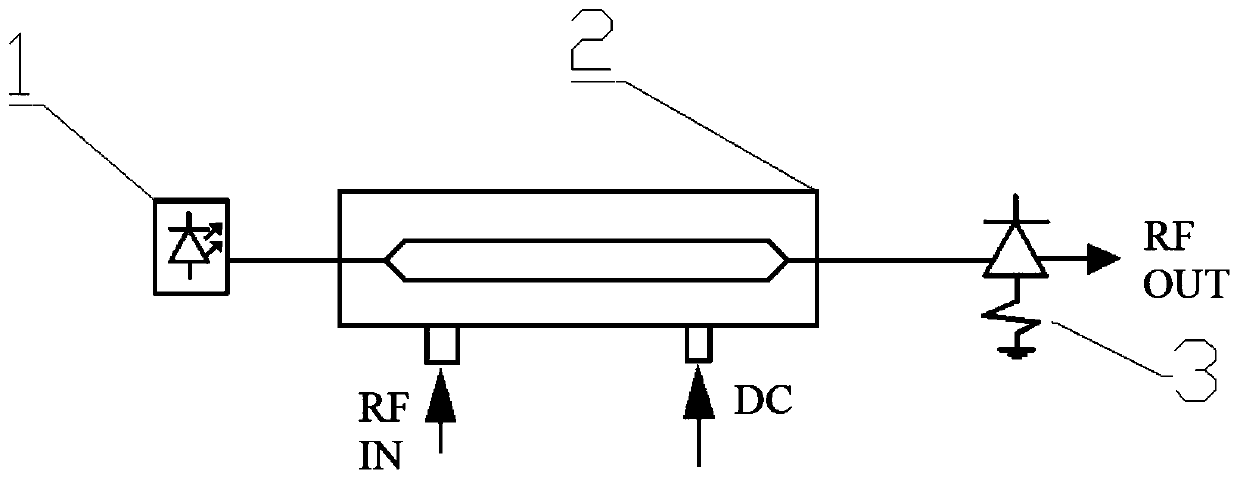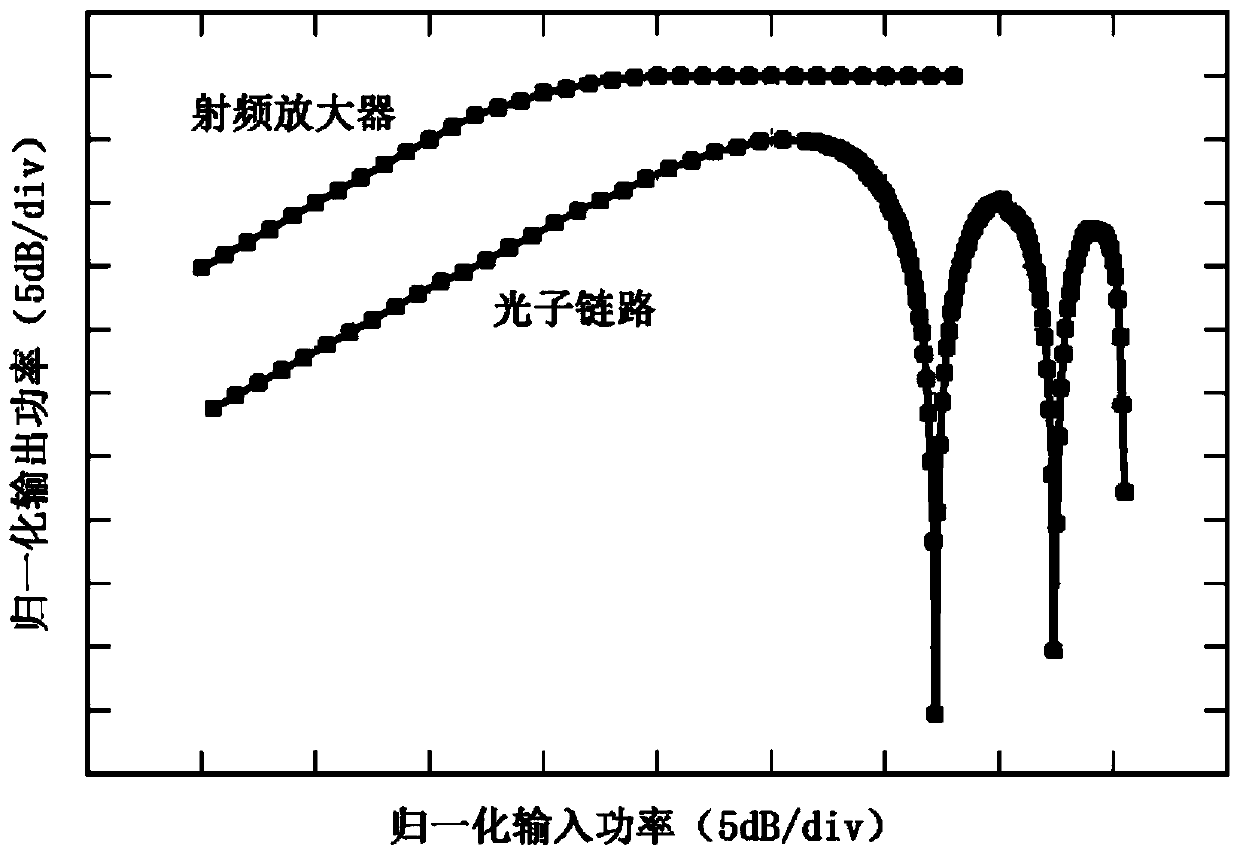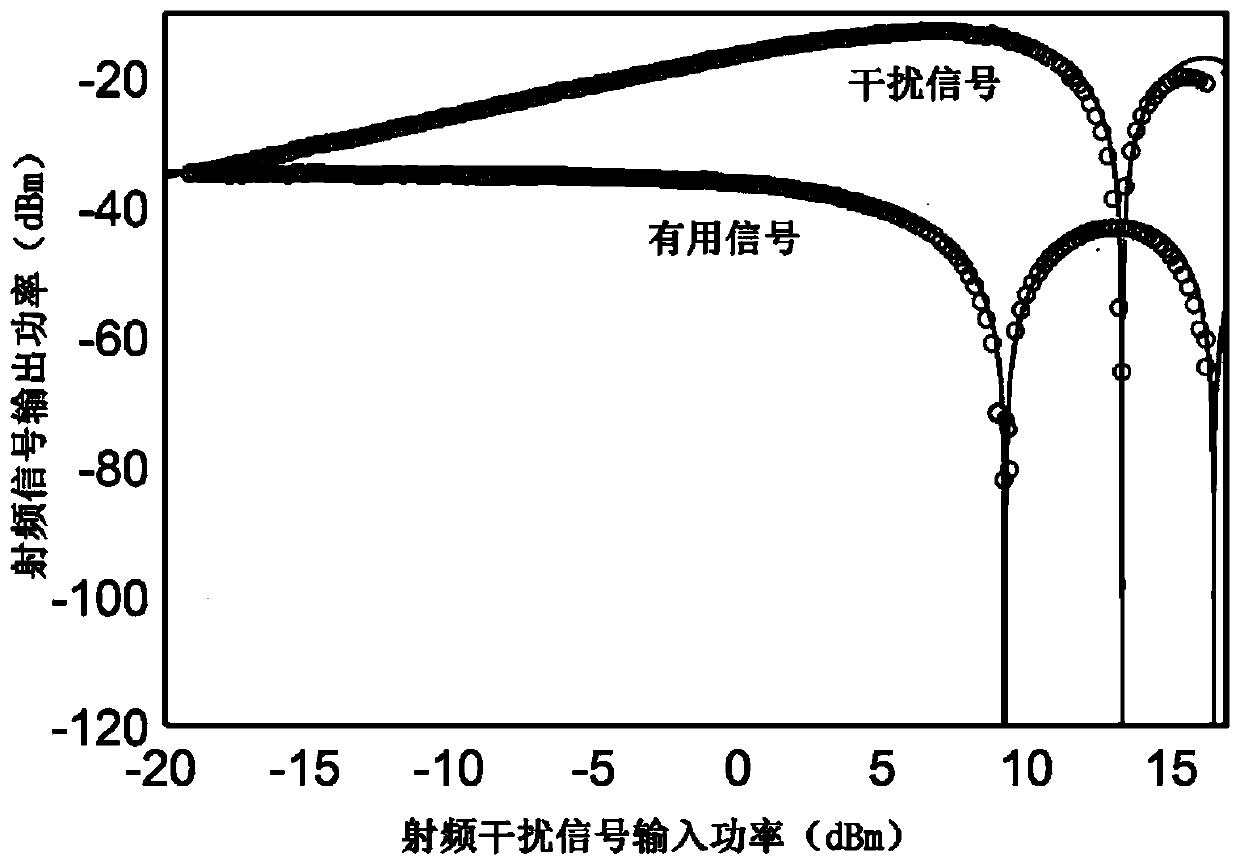Co-location interference suppression method based on optical processing
A technology of co-site interference and optical processing
- Summary
- Abstract
- Description
- Claims
- Application Information
AI Technical Summary
Problems solved by technology
Method used
Image
Examples
Embodiment 1
[0025] This embodiment provides a method for suppressing co-site interference based on optical processing. The description of the method is as follows Figure 4 As shown, the co-site interference suppression method is as follows:
[0026] Step 1, define the link RF input signal as V(t)=V D +V S sin(ω s t)+V N sin(ω N t), where V D is a DC signal, V S sin(ω s t) is useful signal, V N sin(ω N t) is an interference signal;
[0027] Step 2, define the output power of the interference signal
[0028] The rate is: Among them, H pd is the frequency response of the photodetector circuit, J is the Bessel function of the first kind, and I dc is the photocurrent of MZM;
[0029] Step three, calculate root of From this, the required input interference signal power is calculated when the output interference signal is suppressed
[0030] Among them, V π is the half-wave voltage of the Mach-Zehnder modulator;
[0031] Step 4, control the power of the input signal ...
PUM
 Login to View More
Login to View More Abstract
Description
Claims
Application Information
 Login to View More
Login to View More - R&D
- Intellectual Property
- Life Sciences
- Materials
- Tech Scout
- Unparalleled Data Quality
- Higher Quality Content
- 60% Fewer Hallucinations
Browse by: Latest US Patents, China's latest patents, Technical Efficacy Thesaurus, Application Domain, Technology Topic, Popular Technical Reports.
© 2025 PatSnap. All rights reserved.Legal|Privacy policy|Modern Slavery Act Transparency Statement|Sitemap|About US| Contact US: help@patsnap.com



